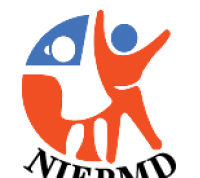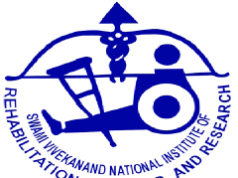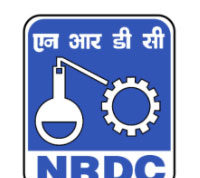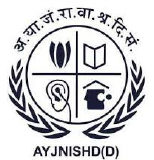
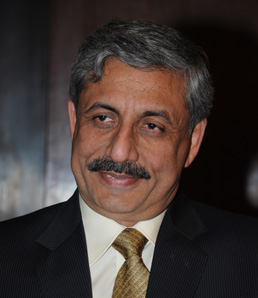 Raj K. Manchanda1, Anil Khurana2, Praveen Oberai3, Debadatta Nayak4, Varanasi Roja5
Raj K. Manchanda1, Anil Khurana2, Praveen Oberai3, Debadatta Nayak4, Varanasi Roja5
- Director General, Central Council for Research in Homoeopathy, New Delhi
- Deputy Director General, Central Council for Research in Homoeopathy, New Delhi
- Research Officer(H)/Scientist-IV, Central Council for Research in Homoeopathy, New Delhi
- Research Officer(H)/Scientist-II, Central Council for Research in Homoeopathy, New Delhi
- Researh Officer/Scientist- II, Central Council for Research in Homoeopathy, New Delhi
INTRODUCTION
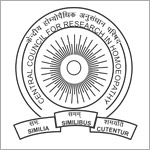 Acute Encephalitis Syndrome (AES) is a constellation of clinical signs and/ or symptoms, i.e. acute fever, with an acute change in mental status and/ or new onset of seizures that signifies acute inflammation of brain cells and/or new onset of seizures (excluding simple febrile seizures) in a person of any age at any time of year. The underlying cause of AES is many such as viruses, bacteria, mycobacteria, however, the aetiology still remains unknown in 68-75% cases. The causative agent of AES varies with season and geographical location, and predominantly affects population below 15 years. It has significant mortality and disability. Keeping in mind the wide range of causal agents and the rapid development of neurological impairment due to pathogenesis, clinicians face the challenge of a small window period between diagnosis and treatment.
Acute Encephalitis Syndrome (AES) is a constellation of clinical signs and/ or symptoms, i.e. acute fever, with an acute change in mental status and/ or new onset of seizures that signifies acute inflammation of brain cells and/or new onset of seizures (excluding simple febrile seizures) in a person of any age at any time of year. The underlying cause of AES is many such as viruses, bacteria, mycobacteria, however, the aetiology still remains unknown in 68-75% cases. The causative agent of AES varies with season and geographical location, and predominantly affects population below 15 years. It has significant mortality and disability. Keeping in mind the wide range of causal agents and the rapid development of neurological impairment due to pathogenesis, clinicians face the challenge of a small window period between diagnosis and treatment.
According to National Vector Borne Disease Control Programme AES /JE is prevalent in 22 States/Union territories and most prevalent in Uttar Pradesh (UP). UP is one of the states which is most populous in India and eastern UP is the endemic zone to JE since 1970. There are annual outbreaks of this illness in the monsoon/post monsoon season. Since 2010, 61957 cases of AES are reported in India and UP reporting 38 % of the cases (23754 cases). Due to government of India patronage and vaccine drive, JE has decreased, however AES is still prevalent (www.nvbdcp.gov.in).
 The problems and challenges in managing AES are many: paucity of data about the regional epidemiology and etiology; lack of easily availability, low-cost microbiological testing for agents of encephalitis; lack of specific treatments for majority of the etiological agents, high incidence of mimickers – pyogenic meningitis, cerebral malaria, tubercular meningitis, acute disseminated encephalomyelitis etc.; lack of facilities for intensive care in the periphery, lack of facilities for neuroimaging in the periphery, inappropriate response during epidemics –what samples to take, how to store, whom to inform, etc., patients delay in seeking health care, delay/not performing lumbar punctures, and inappropriate supportive care.
The problems and challenges in managing AES are many: paucity of data about the regional epidemiology and etiology; lack of easily availability, low-cost microbiological testing for agents of encephalitis; lack of specific treatments for majority of the etiological agents, high incidence of mimickers – pyogenic meningitis, cerebral malaria, tubercular meningitis, acute disseminated encephalomyelitis etc.; lack of facilities for intensive care in the periphery, lack of facilities for neuroimaging in the periphery, inappropriate response during epidemics –what samples to take, how to store, whom to inform, etc., patients delay in seeking health care, delay/not performing lumbar punctures, and inappropriate supportive care.
The treatment of AES requires multidisciplinary approach at the tertiary care level which involves 6 steps: evaluation and management of a child with AES, rapid assessment and stabilization, history and examination, empirical treatment, supportive care and treatment, and prevention/treatment of complications and rehabilitation. As mentioned above multi- dimensional approach is required to manage these cases.
Homoeopathy, a system of medicine, which follows holistic approach to patient. According to World Health Organisation, Homeopathy is the fastest-growing and second-most widely-used alternative system of medicine. It is a therapy which involves many components and three main agents: the patients, with his or her condition and personal characteristics; the medication used, with its composition and manufacturing procedure; and the physician, with his or her approach to treatment and concepts of health. Homeopathic physicians are trained to treat a broad range of conditions in the primary care and specialty setting. In clinical practice, however, practitioners frequently treat patients with chronic conditions that conventional medicine cannot adequately address, including arthritis, allergies, autoimmune diseases, or non-life-threatening acute conditions such as viral infections. In epidemic/endemic diseases also homoeopathy can play a vital role to prevent and treat the diseases such as dengue, acute encephalitis, chikungunya etc.
Central Council for Research in Homoeopathy(CCRH), an apex body, for undertaking research in Homoeopathy under Ministry of AYUSH, Govt. of India, has been taking steps for exploring the usefulness of Homoeopathy in preventing/treating epidemic/endemic diseases including AES/JE. It has developed an information booklet focusing on AES/JE and homoeopathic approach of treatment which is available at its website www.ccrhindia.nic.in. Continuous efforts are being made to document the treatment and preventive effects of homoeopathic medicines in AES/JE. The excerpts of the research finding of different studies undertaken in this area are as follows:
BASIC RESEARCH
CCRH had already completed one preclinical study (2007-10) to assess the effectiveness of Homoeopathic medicine Belladonna as preventive for on in vitro and in vivo model in collaboration with School of Tropical Medicine, Kolkata. It was found that Belladonna significantly protected the suckling mice from JE infection.
Further, it has undertaken a study in collaboration with King George’s Medical University, Lucknow, Uttar Pradesh to understand the action of Belladonna-Calcarea carb. -Tuberculinum as combined regimen on JE. The study is being initiated in March 2015 and is ongoing.
CLINICAL RESEARCH
PROPHYLACTIC (PREVENTIVE) STUDIES
CCRH had carried out research studies for prevention and treatment of JE during its epidemics in eastern parts of U.P. in 1989, 1991 and 1993. Belladonna 200, single dose was distributed as preventive to 3,22,812 persons in 96 villages in three districts of U.P. (Gorakhpur, Deoria, Maharajganj) during the period 29th Oct. to 16th Nov. 1991 in the wake of reoccurrence of JE epidemic in Uttar Pradesh (India) by a team of research workers of CCRH, New Delhi. Follow up of 39,250 persons was done and it was found that none of them reported any signs and symptoms of JE.
Apart from this the Government of Andhra Pradesh had published about the effectiveness of homeopathic medicine Belladonna, Calcarea carbonica and Tuberculinum as prophylactic in combating Japanese encephalitis. As prophylactic drugs, Belladonna 200 on 1, 2, 3 days one dose each, Calcarea carbonica 200 on 10th day and Tuberculinum 10 M on 25th day were administered in a phased manner to all children in the age group of 0-15 years in the month of August every year for three consecutive years. This project was named B.C.T. After its commencement in 1999 the mortality and morbidity rates of J.E. fell drastically. 343 cases were reported in 2000 with 72 deaths, in 2001 only 30 cases with 4 deaths, in 2002 only 18 cases but no deaths, in 2003 and 2004 no cases were recorded.
With a positive lead in basic research and prophylactic studies, further study is being initiated at Gorakhpur district this year and is on-going.
TREATMENT STUDIES
A research unit is being set up by CCRH in the premises of BRD medical college, Gorakhpur in the year 2012 for exploring the role of homoeopathic medicines in managing AES. Because of various challenges in treating this condition and less documentation and experience in this area, an exploratory observational comparative study was conducted in the year 2012. A total of 151 children diagnosed with AES were enrolled. Out of them 121 children were given standard care along with homoeopathic medicine and 30 children were kept under standard care alone. The result showed 12 (9.9%) death homoeopathy added group whereas it was 13 (43%) death in standard care group. There was 33% reduction in death and disability in group were homoeopathy was added compared to standard care alone. The results were statistically significant.
The encouraging results of above study lead to undertake a randomized controlled trial with a total of 612 patients. Three hundred six children were given standard care along with homoeopathy and 306 were given standard care along with placebo. There was 16% reduction in death and disability in homeopathy added to standard care group (12.7%) in comparison to placebo added to standard care group (28.4%) which was statistically significant.
Thereafter, keeping in view the successful and persistent results in above studies during the year 2016, homeopathic treatment along with standard care was given to 336 patients. During the said period data of 299 cases who were not given add on homeopathic treatment were collected from the hospital. Their outcome was compared. The results showed similar findings to the randomized controlled trial. There were 14% reduction in death and disability homoeopathy added group (14.6% ) compared to control group (28.4%).
The homoeopathic medicines found effective for prescribing to children suffering from AES are Belladonna, Stramonium, Arsenicum album, Helleborus niger, Bryonia alba, Sulphur, Cuprum metallicum, Opium and Nux vomica.
CONCLUSION
Integrating homoeopathy with standard care can reduce the death and disability due to AES/JE which is presently not possible with individual systems. Research studies in this area are in progress to further validate the findings.
BIBLIOGRAPHY
- WHO–recommended standards for surveillance of selected vaccine-preventable diseases. Vaccines and Biologicals; World Health Organization 2003. Available from http://whqlibdoc.who.int/hq/2003/who_v&b_03.01.pdf
- Sharma S, Mishra D, Aneja S, Kumar R, Jain A, Vashishtha V M et al. Consensus Guidelines on Evaluation and Management of Suspected Acute Viral Encephalitis in Children in India. Indian Paediatrics 2012;49_Nov. 16:897-910
- Rastogi D.P., Sharma V.D. Study of Homoeopathic Drugs in Encephalitis Epidemic in Uttar Pradesh (INDIA); Central Council for Research in Homeopathy Quarterly Bulletin; 1992: 14 (3&4):1-11
- Bandyopadhyay B, Das S, Sengupta M, Saha C, Das KC, Sarkar D and Nayak C. Decreased Intensity of Japanese Encephalitis Virus Infection in Chick Chorioallantoic Membrane Under Influence of Ultra-diluted Belladonna Extract. Am. J. Infect. Dis2010, 6(2):24-28
- Bandyopadhyay B, Das S, Sengupta M, Saha C, Bhattacharya N, Chinta R, et al. Suckling mice of “Belladonna 200” fed mothers evade virulent nakayama strain Japanese encephalitis virus infection. Int J Microbiol Res, 2011;2:252-7
- Manchanda RK, Oberai P, Roja V, Singh S, Singh N, Khan T, et al. Evaluation of homoeopathic medicines as add-on to institutional management protocol in Acute Encephalitis Syndrome: An exploratory observational comparative study. Indian J Res Homeopathy 2015;9:34-41.
- Government of Andhra Pradesh. Japanese Encephalitis-Homoeopathic Prevention Programme. 2004
- Gadugu S, Nyapati SR, Sastry GLN. An open observational study on efficacy of miasmatic prescription in the prevention of Japanese Encephalitis. Homeopathy 2014; 103(1): 78-79
- National Vector Borne Disease Control Programme. AES/JE Cases and Deaths in the Country. Directorate General of Health Services. Ministry of Health and Family Welfare, Government of India. 2012. Available from http://www.nvbdcp.gov.in/Doc/je-aes-cd- tillMay 2014.pdf
- National Vector Borne Disease Control Programme. Revised Treatment Guidelines for AES including JE [Internet]. Delhi: Publication of Govt. of India. August 2009. Available from: http://www.nvbdcp.gov.in/Doc/Revised%20guidelines%20on%20AES_JE.pdf
- Ghosh S and Basu A. Acute Encephalitis Syndrome in India: The Changing Scenario. Ann Neurosci. 2016 Sep; 23(3): 131–133.
SUMMARY
Homoeopathy is a system of medicine, which uses holistic approach to treat the patient. According to World Health Organization, this system is the second most popular system of medicine in the world. No side effects, cost effectiveness and patient friendly administration of medicine are other merits of this therapy. Acute encephalitis syndrome (AES) is a problem in the Indian sub-continent and is endemic to certain regions of India. With vaccine drive Japanese encephalitis (JE) has been declined. However, with many underlying causes and short window period for treatment, AES still remains challenging for the healthcare system for its prevention and management with considerable death and disability. Homoeopathic medicines with an integrated approach can play a vital role in reducing the death and disability due to AES/JE. Research studies in this area are in progress to further validate the findings.



